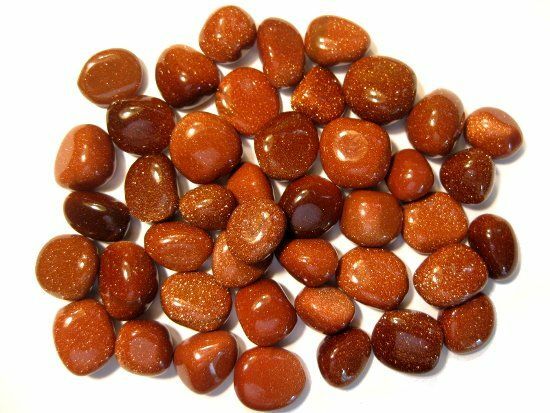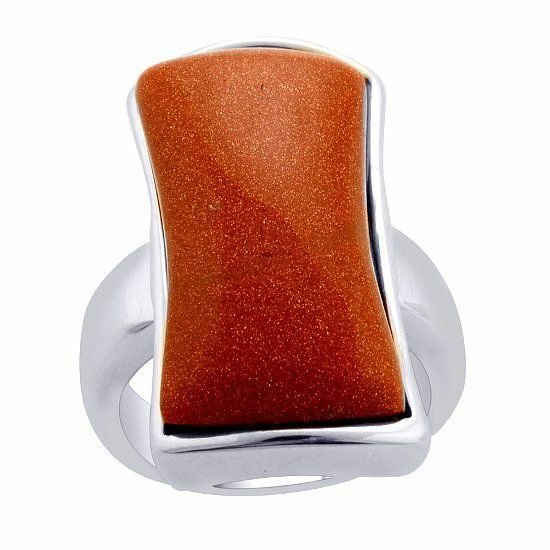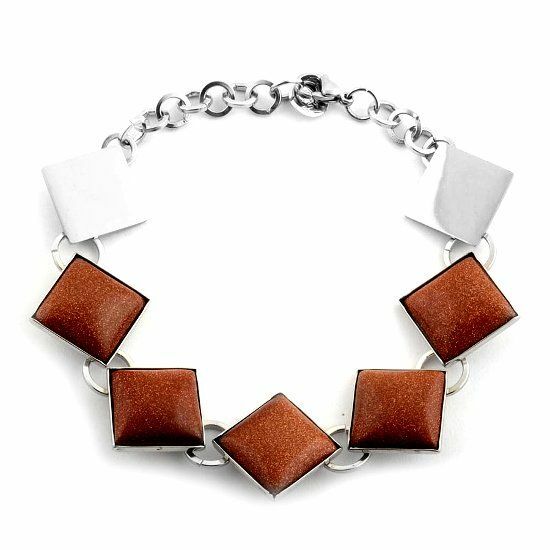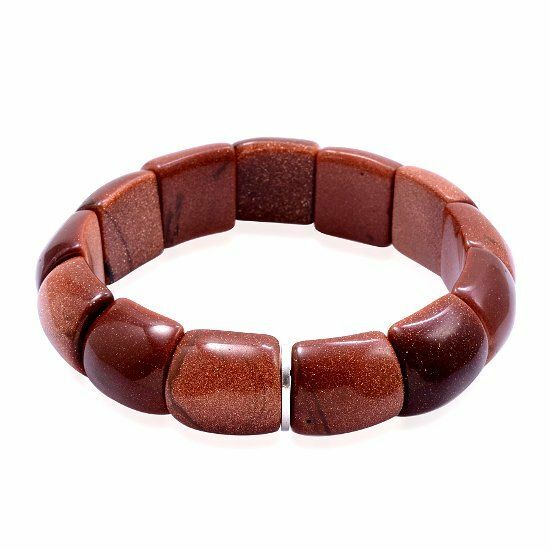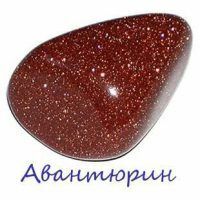
Since ancient times, aventurine has been considered a talisman of passionate love and devotion because of its magical properties. People believed that this stone was a gift from the gods themselves. Its fascinating golden flicker and today inspires the masters.
History of stone
It is known that aventurine gained its popularityeven in the time of ancient civilizations, to which there are many confirmations.
For the first time, aventurine was discovered in India. Local residents believed that this stone is a talisman of fakirs and snake charmers.
Later, a golden mineral under the name "sandastros" or "sandares", along with traders, got to Ancient Greece, where he became a favorite of masters.
In China, especially appreciated green aventurine. Along with jade and jadeite, he gained the status of a sacred stone and was called "imperial".It was from him that the main imperial seal was carved.
Many different names for their centuries-old history wore aventurine, while thanks to the Venetian master of the XVI century, he did not find his today's name, which has already become us familiar.
The stones of aventurine in England during the Victorian era were extremely popular. Skilled British masters decorated the rings with golden, green and yellow adventurines, which the young ladies of that time were romantically called "the collection of love".This name is not accidental - usually such rings with aventurine contained a small hiding place, in which enamored girls could hide a photo or a lock of hair of their lover.
In Russia, this stone gained its popularity only at the beginning of the XIX century. Here it was often called the "sparkler" or "zlatochkrom".In 1810 in the Southern and Middle Urals began to produce high-quality yellowish brown adventurines, and on the Kursk "Magnitogorsk" extracted stones of green color. The most beautiful samples of the mined stone were decorated with cufflinks, brooches and other costume jewelery. Great demand was used for decorative items made of golden mineral: aventurine vases, candlesticks and statuettes. Made from aventurine and cutlery - in particular, made the handle of forks and knives.
to contents ^Description of mineral
Aventurine is a kind of quartz, which has in its structure multi-colored inclusions of mica, which give the stone a special sparkling-golden ebb. The color palette of aventurine impresses with its diversity. In nature, there are stones of pink, white, orange, green, cherry and even black. For example, in the Urals, yellow and red-brown stones are mined, and a rare green aventurine is mined in India, China and the United States.
Depending on the deposit, there are different names for the mineral, for example, aventurine, mined in America, is called a "Colorado gold stone", and a unique Indian green stone is better known as "Indian greed."Other names of the stone: belorechit, spark, taganite, fuchsit, zlatochkr, love stone, sandastros and taganite.
Its modern name aventurine received from the Italian word "per l'avventure", which means "happiness" or "adventure".
to contents ^Varieties of aventurine
In nature, there are about a dozen decorative varieties of aventurine, which differ in their texture and color. The main ones are:
- Homogeneous golden-cherry aventurine is a fine-grained variety of a beautiful, rich cherry-colored stone with golden shimmer. Among all the adventurines this variety has the brightest coloring and the most intense flickering.
- Homogeneous honey-yellow aventurine is a uniformly-grained variety of a pleasant honey-yellow shade, which is characterized by uniform coloration and especially bright "sparkle".
- A homogeneous brown aventurine with a cherry tint is a dense, fine-grained variety of brown stone, which is characterized by a uneven uneven coloring.
- Homogeneous pink aventurine is a fine-grained variety of pink stone, characterized by a weak spark and uniform coloration.
- A spotted striped cherry-white aventurine is a non-uniform variety of white or pink stone with a pattern in the form of cherry-brown fuzzy stripes and spots.
- Unclear, striped white aventurine is a heterogeneous variety of white stone with a pattern in the form of intermittent fuzzy light golden bands.
Chemical composition and physical properties of the stone
By its species, aventurine is a fine-grained quartz, with various inclusions of scaly minerals that give the stone a unique flicker. The basis of aventurine is actually a polycrystalline aggregate of quartz.
In its chemical composition, aventurine is silicon silicate. Chemical formula of the mineral: SiO2.The content of silicon oxide in the mineral composition is from 80% to 95%.
Also aventurine contains various inclusions that determine the color and texture of the stone:
- muscovite;
- pyrite;
- rutile;
- ilmenite;
- hematite;
- sphene;
- leukosfen;
- limonite;
- fuxite;
- apatite.
The hardness of the aventurine corresponds to values 6.0-7.0 units on the Mohs scale, and the density of the stone is 2-2.6 g / cm3.
to contents ^Deposits of aventurine
The best examples of aventurine are in Russia( in the Urals) and Brazil. The surroundings of Salzburg( Austria) are a deposit of a unique blue aventurine.
Russet stones are mined in the Cap de Gata( Spain).A rare stone with inclusions of fuchsite, due to which the stone has a green tint, was found in India.
to the table of contents ^The healing properties of the mineral
Aventurine has long been famous for its medicinal properties.
So, lithotherapists are sure that the mineral effectively helps with:
- skin diseases( rash, eczema);
- baldness;
- cold;
- bronchitis;
- Allergies;
- high pressure;
- cardiovascular disease.
Also aventurine:
- cleans warts;
- improves blood circulation;
- harmonizes the metabolism;
- relieves nerve disorders;
- cures psychosomatic illnesses;
- helps to get rid of phobias.
Magic properties of aventurine
Since ancient times, various magical properties have been attributed to the stone with the beautiful name "aventurine".This mineral was considered the best talisman for maintaining a joyful mood.
And today, many magical properties are attributed to the adventurine. He is often called a "mediator in pure love", becauseit is believed that it favors a strong and lasting relationship.
In addition, natural aventurine:
- charges with optimism;
- gives its owner emotional purity;
- effectively cleanses the mental and emotional bodies;
- helps cleanse the space around its owner;
- adds self-confidence;
- lifts the mood.
Among contemporaries there is an opinion that natural aventurine helps to win a victory in gambling, but one should not abuse this help - with prolonged use, a stone can lead to losses and serious material losses.
to contents ^Aventurine and zodiac signs
Astrologers refer to aventurine as the "Sun Stone and the" Stone of Pure Love. "
Experts wear Taurus, Cancers and Virgos to wear ornaments with adventurine. For example, people born under the sign of Cancer, the stone gives confidence and inspiration.
But the stone is contraindicated to Capricorns, Scorpions and Aries, since with the prolonged use of representatives of these signs frivolity and hysteria begin to appear.
to contents ^Application of the gem
Aventurine is classified as a group of jewelry and ornamental minerals. Stone enjoys great success due to its unique flicker. From aventurine beautiful vases, candlesticks, seals and other decorative products are made.
They also use aventurine in jewelry. After processing, skilfully cut or polished cabochons sparkling stones are inserted into cufflinks, bracelets, earrings, brooches, pendants and rings.
to the table of contents ^Interesting facts about the stone
- In ancient Greece, aventurine was considered pressed gold sand - the gift of Hera( the goddess of the Earth) herself.
- In the period of gold rush among the searchers there was a belief that with the help of aventurine it is possible to find a gold vein.
- Usually jewelry made of aventurine is small in size, becausethe width of the decorative plot of stone is only 10-15 cm.
- Often masters prefer the adventurin glass( artificial adventurine).According to legend, it was discovered in the 16th century in the city of Murano by a Venetian glassblower, who accidentally mixed glass with copper sawdust. In fact, artificial aventurine could be made in ancient Egypt.
- People have long believed that aventurine exacerbates all emotions. They say that it was used by the famous Don Juan.
- To date, the Hermitage collection is decorated with a 1.5 m high vase and a diameter of almost 2.5 m, carved from a single aventurine.
- In the London Geological Museum there is a unique aventurine vase, which was donated by the Emperor Nicholas I himself to the famous British aristocrat Murchison.
How to distinguish natural aventurine from forgery
Unfortunately, people have learned to forge aventurine for a long time, so many samples of this stone, which are now offered in stores, are simply colored in various colors with shiny and shimmering inclusions.
How not to be deceived and to distinguish natural stone from forgery?
- It should be remembered that fake aventurine has an unnaturally bright saturated artificial color and an abundance of sequins, while in nature the color of natural stone is less bright and variegated.
- Natural aventurine shows only a weak irrigation, and aventurine glass has a strong luster.
- In a fake scaly inclusions are located chaotically, and if you look closely, you can see the areas of colored glass with a content of less or more blondes.
Stone care
- Although aventurine is not fastidious in care, it should be remembered that this stone is sensitive to temperature changes and to prolonged exposure to direct ultraviolet rays.
- When cleaning it, you should beware of chemical solutions. It is best to clean with a toothbrush and soap solution.
- After cleaning, it is best to rinse the stone with warm water and wipe with a soft cloth. Daily care for the stone includes washing with clean water and "replenishing" with solar energy.
Pictures of aventurine stone and its products
